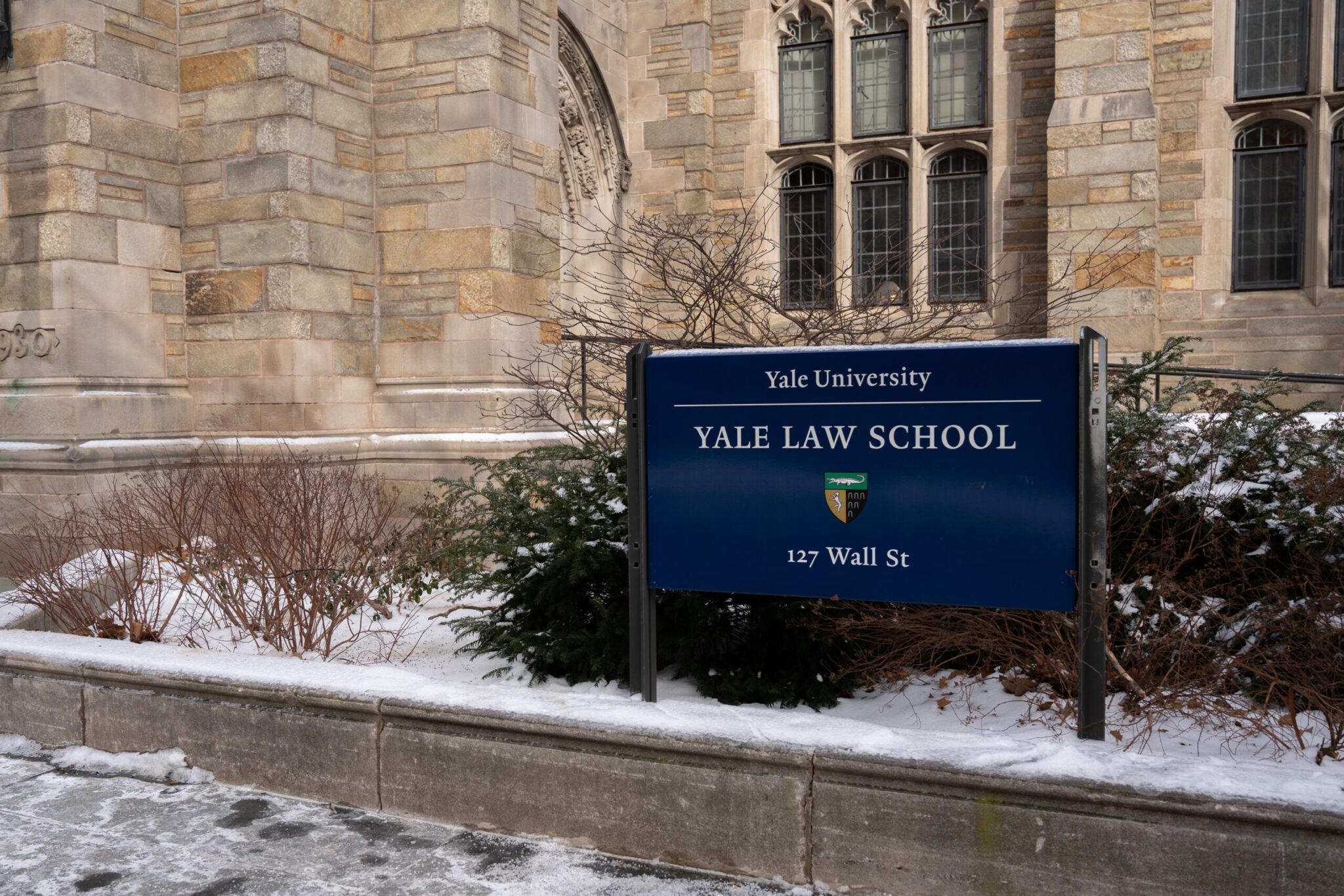Law School course explores Supreme Court history through working papers of former Justice Potter Stewart ’37 LAW ’41
The new course, taught by legal research lecturers Nicholas Mignanelli and Michael VanderHeijden, aims to explore how judges use historical court documents to make sense of judicial decisions.

Ellie Park, Photography Editor
During the oral arguments for Dobbs v. Jackson Women’s Health, the case that overturned the constitutional right to an abortion, Chief Justice John Roberts referenced the private papers of former Supreme Court Justice Harry Blackmun, who wrote the Court’s majority opinion in Roe v. Wade.
Roberts, who referred to such papers as an “unfortunate source,” used them to support his assertion at the oral argument to argue that Roe v. Wade could be revised without being completely overturned.
While scouring through private documents has usually been restricted to academic scholars, Roberts’ argument demonstrated their use in judicial decisions, per Nicholas Mignanelli, legal research lecturer at the Law School.
Inspired by the use of these papers, Mignanelli and Michael VanderHeijden, another lecturer at Yale Law School, introduced a new course last semester designed to equip interested law students with an understanding of court documents and judicial history.
In the course, titled “Research Methods in Judicial History,” students had the opportunity to delve into the working papers of former Supreme Court Justice Potter Stewart ’37 LAW ’41, who served as chairman — a former title for the current position of editor in chief and president — at the News while a Yale student. By engaging with these archival materials, the course aimed to provide students with these research skills once primarily utilized by scholars, but now, increasingly essential for legal practitioners, according to Mignanelli and VanderHeijden.
One student who took the course, Isaac May LAW ’24, told the News that he appreciated the class’ focus on research methods which often go overlooked.
“I would highly recommend the course,” May told the News. “Research methods in judicial history were extremely useful in becoming acquainted with an often neglected source for both historians and lawyers.”
May added that the legal field is often unsure how to handle material beyond published opinions. But he said that the professional and personal papers of judges and Supreme Court justices “can shed considerable light on their reasoning.”
Held at Yale’s Beinecke Rare Book & Manuscript Library, the 679 boxes of Stewart’s materials and papers — the most extensive collection of any justice held at Beinecke — provided students a foundation for exploring how judges and legal scholars leverage historical court materials to inform judicial decisions.
Mignanelli emphasized that a significant aspect of the course also centers on court documents, in addition to papers, spanning from the filing of complaints in federal or state courts to responses and exhibits. It also encompasses the opinions of judges across various levels of the judiciary, including trial courts, appellate courts and the Supreme Court, at both state and federal levels. Moreover, students delve into the private papers of former judges like Stewart to gain insight into the judicial process and decision-making.
“I think [this course] meets a need or an interest at Yale Law School,” Mignanelli said. “And I think it’s responsive to a lot of the discussions that we’re seeing in American law right now.”
Mignanelli also told the News that the course included several guest lectures. The first was delivered by Linda Greenhouse LAW ’78, who shared insights from her experiences as a journalist covering the Supreme Court and as a biographer of the Supreme Court. The class also featured lectures from Susan deMaine, an expert on Supreme Court papers and associated policies and Eric Sonnenberg, a Yale archivist who formerly specialized in legal documents.
In an email to the News, Greenhouse said there is a “special thrill” in handling the original documents that form part of Supreme Court history. She said that it was a pleasure for her to share that experience with the students in the class.
On the final day of the class, students visited the Beinecke. According to Mignanelli, they were given the freedom to select materials of their choice from the Stewart papers. He explained that these papers ranged from birthday cards received by Stewart to letters he wrote to his contacts at Yale, offering students a diverse and immersive glimpse into the personal and professional life of the former Supreme Court Justice.
“The students were able to choose whatever they wanted,” he explained. “Some of them chose early drafts of famous Supreme Court opinions to see what the process was through which the language came out the way it was, and we had some who chose birthday cards, as they were really interested to see the more biographical elements of his life.”
When asked if he would be teaching this class in future semesters, Mignanelli said that it would “definitely” run again.
“I think there is a lot of interest right now in historical research in American law,” Mignanelli told the News.
Stewart was appointed to the Supreme Court by President Dwight D. Eisenhower in 1958.
Correction, Feb. 22: This article has been updated to include a more accurate description of Robert’s use of private papers at oral argument.







